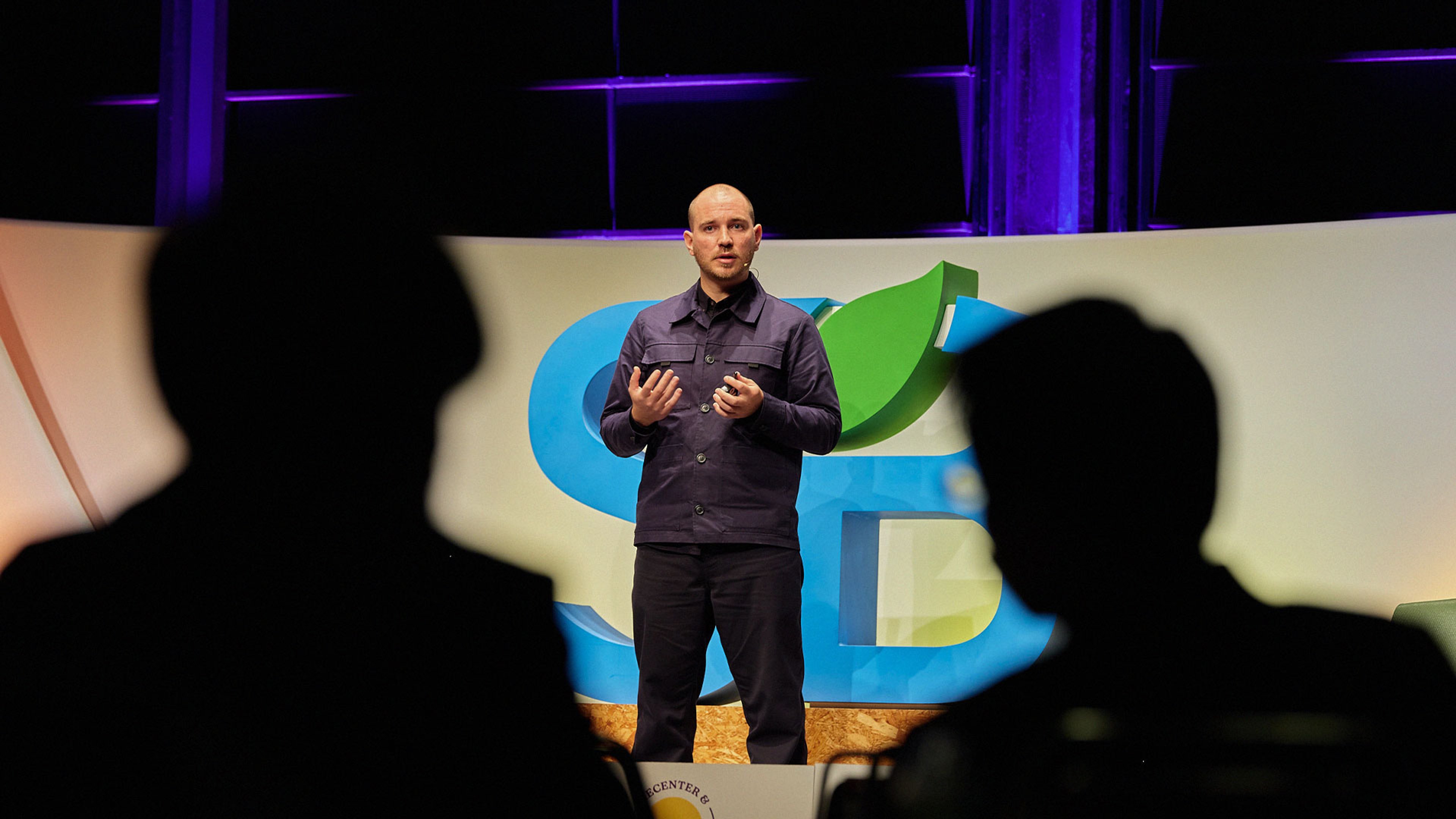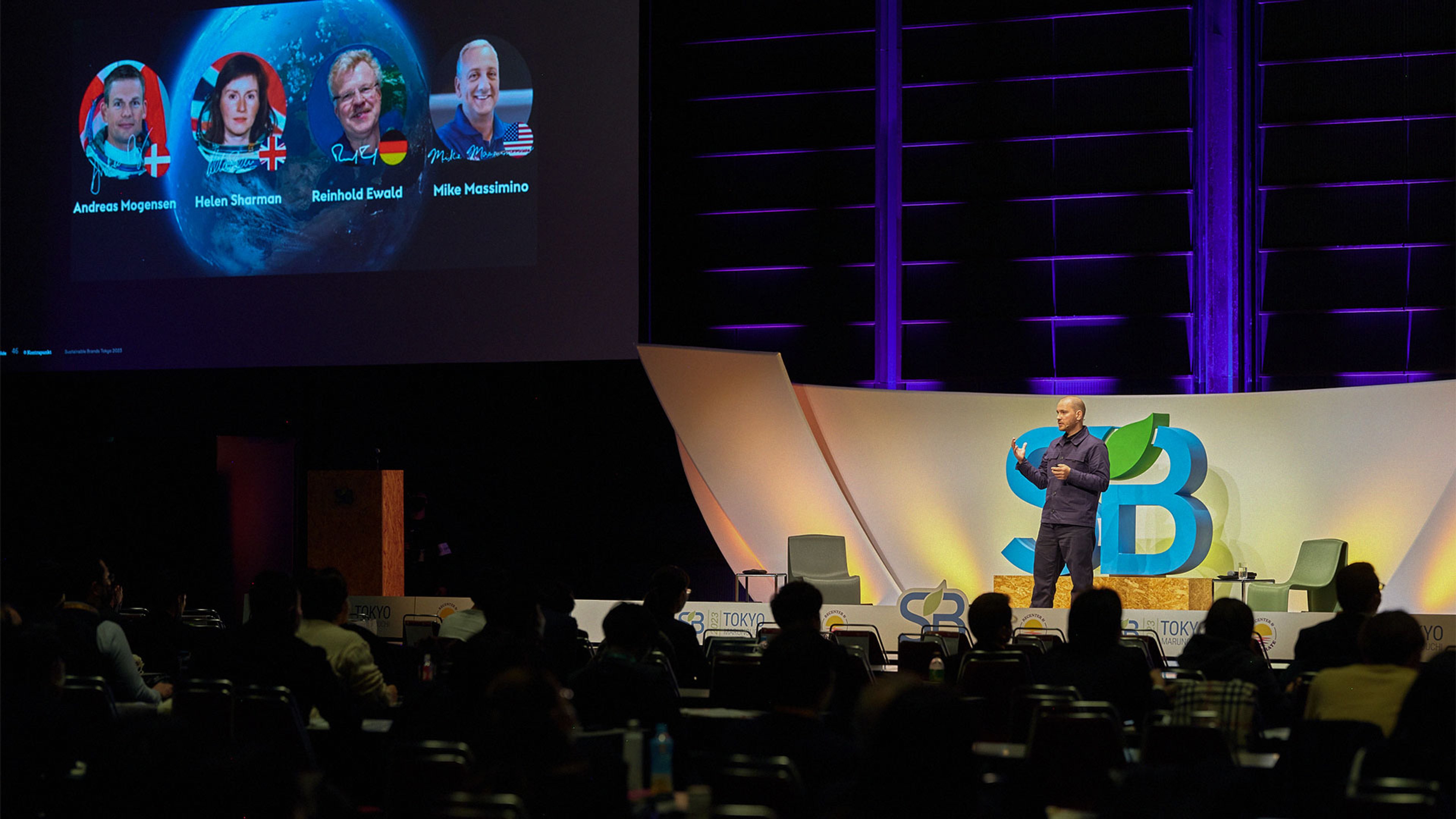Building a Sustainable Brand

Written by
In a world where sustainability matters more than ever, brands have become the catalysts for change. But how can they effectively align environmental, social, and governance (ESG) principles with their brand strategy?
Nowadays, brands have to act as a leading force for change in environmental, social and governance (ESG) questions, rated above NGOs, media and governments. As a first step, this requires reevaluating the most fundamental parts of the business and strategy – however, brands must not merely align ESG initiatives with the brand strategy but also communicate this transparently and clearly to consumers and stakeholders. Our Executive Creative Director and partner Philip Linnemann spoke on the topic at Sustainable Brands Conference 2023 in Tokyo earlier this year, from which we would like to share three important steps in the journey of becoming a sustainable brand.

Incorporating ESG Principles
Firstly, the alignment between business and ESG strategies is crucial. Both should work towards the same goals, acknowledging the significance of a triple bottom line, science-based targets, and addressing material issues. This alignment ensures integrity.
Secondly, the organisation must align ESG and brand strategies internally. This requires a mutual understanding between departments. Top management should recognise the importance of authentic sustainability communication and the necessary investments to achieve it. Shifting from short-term push marketing to long-term pull communication through thought leadership and impact communication is essential. This shift prioritises impact over sales and builds trust while engaging stakeholders.
Additionally, achieving alignment among stakeholders, or recognising the lack thereof, is crucial in managing change at scale. If done right, your company's narrative can become much more than your balance sheet's activities. It can become a movement.

Authenticity and Transparency
At Kontrapunkt, it all begins with your company's purpose and narrative. What drives your existence, what future do you envision, and what values guide you and your employees towards that vision? From there, it's crucial to articulate this purpose across all departments, strategies, and activities—an approach we refer to as purpose architecture. One of the best proxies to communicate and showcase the business' purpose architecture is by looking into the annual report. But it takes more than a compelling annual report – it's about creating concise and holistic storytelling, targeting all your stakeholders across different platforms.
From the structure of your website to the key messaging in your corporate and marketing communications, it is essential to ensure that your brand's ESG efforts are genuine, supported by tangible actions, and tied to measurable goals. Recognise that this is not a one-off activity but an ongoing interaction with all stakeholders, sharing your impact journey and continuously evaluating and adapting your communication as you grow.
“
It is essential to ensure that your brand's ESG efforts are genuine, supported by tangible actions, and tied to measurable goals. Recognize that this is not a one-off activity but an ongoing interaction with all stakeholders.
Philip Linnemann
Leveraging Storytelling
Connecting with your stakeholders is crucial for any company that is ambitious about creating a sustainable brand transformation. To do so, brands must craft narratives that evoke emotions and resonate with the target audience, emphasising the positive impact of the brand's sustainability efforts whilst ensuring that these claims are backed by evidence. This is done by communicating with equal amounts of ambition and humility.
In line with the old brand paradigm, companies often prioritise boasting about their qualities rather than sticking to the facts. However, there are missed opportunities in disregarding the power of humble and transparent communication. Transparency in storytelling should include both success and challenges. Sharing ongoing learnings along the journey can bring brands closer to their audience.


The Role of Design
Design reinforces a brand's overall purpose by ensuring consistency across various touchpoints. This consistency enhances memorability and impact, demonstrating the brand's genuine dedication. Additionally, brands should adopt a publisher's mindset, leveraging different visual elements ranging from colour and typography to VR and spatial design. The possibilities for creating captivating visual storytelling are expanding, and brands must stay ahead of art direction and technology to maximise their potential.
Lastly, the brand's products and services must be sustainable, prioritising usability, durability, and recyclability while enhancing the overall customer experience.

Let's break it down. After delving into the intersection of branding and ESG, our Executive Creative Director and partner, Philip Linnemann, extends the three highlights into three tangible best practices. How do Ørsted, Unilever and Novo Nordisk excel in their shift towards a more sustainable brand?
Ørsted - World’s Most Sustainable Company for 4 Consecutive Years
Ørsted has effectively aligned its branding with sustainable practices by undergoing a remarkable transformation from a traditional fossil fuel-based energy company to a global leader in renewable energy. The company's rebranding efforts played a significant role in shifting the perception of its brand over time.
Design and effective communication have been instrumental in Ørsted's transformation. The name change from DONG Energy to Ørsted and the new logo, featuring a stylised "Ø" resembling a power button, represent the energy transition, while the colour palette, inspired by Danish functionalism, reflects an optimistic and sustainable outlook on the future. Additionally, Ørsted actively communicated their sustainability initiatives, such as offshore wind farms and carbon neutrality goals, sharing their vision of a world powered by green energy. Through impactful narratives, Ørsted is transparently showcasing progress and aligning communications with their sustainability journey.
Unilever - Leading the Way in Sustainability Transformation
Under former CEO Paul Polman's visionary leadership, Unilever has undergone a significant transformation to become more sustainable. The transformation encompassed the master brand and all product brands, driven by a holistic approach deeply embedded in the company's strategy and operations. A key initiative under Polman was the Sustainable Living Plan, setting ambitious targets and commitments across Unilever's value chain.
To align the brand with sustainability, Unilever focused on purpose-driven branding. They positioned themselves as a company delivering quality products while making a positive contribution to society and the environment. Unilever's brand purpose was aligned with the United Nations' Sustainable Development Goals (SDGs), addressing pressing global challenges such as climate change, poverty, and inequality. This purpose-driven approach allowed Unilever to communicate its commitment to sustainability effectively.
To visually communicate their purpose, Unilever adopted a distinctive illustration style. This unique illustration style effectively conveyed complex concepts in an accessible and visually appealing manner, reinforcing their commitment to a more sustainable future.


Novo Nordisk - Integrating Sustainability into Branding
Novo Nordisk has successfully aligned its branding with sustainable practices. By integrating social and environmental responsibility into its core business strategy, Novo Nordisk showcases its commitment to reducing environmental impact and promoting responsible consumption.
Design plays a crucial role in Novo Nordisk's sustainability efforts. They prioritise sustainable packaging solutions that use eco-friendly materials, minimise waste, and provide clear recycling instructions. This dedication to sustainable design not only aligns with their brand values but also contributes to a positive brand image.
Communication is another key aspect of Novo Nordisk's brand alignment with sustainability. They effectively communicate their sustainability goals and initiatives through various channels, including their website, social media platforms, and annual reports, while engaging stakeholders through educational campaigns, partnerships, and advocacy efforts related to diabetes care.
Learn more about the case

A global energy company goes green

